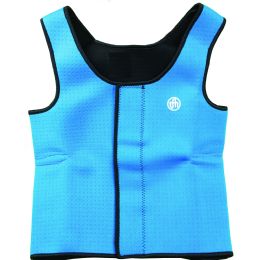
Modifying their activities and environment is known to help children with these conditions enjoy more activities and manage their challenges. Weighted products are one of the resources used to accomplish just that.
Rehabmart carries a large assortment of superior quality weighted products from notable vendors such as Southpaw Enterprises, Sammons Preston, Enabling Devices, Weighted Wearables, TFH and others.












.jpg&newheight=260&quality=80)

What are sensory processing disorders?
For humans to function in various environments, multisensory integration is required. This is how information from various senses (such as sight, sound, smell, touch, taste and self-motivation) may be integrated by the nervous system.
Sensory processing disorder (SPD), also known as sensory integration dysfunction, is a condition that exists when the brain does not adequately process and integrate multisensory inputs. Appropriate responses to environmental demands are not achieved.
One sensory processing disorder frequently encountered today is attention deficit hyperactivity disorder (ADHD), in which children are unable to control their activity, to restrain impulsive behavior, and to pay attention. About 3% of all school-aged children are estimated to suffer from this disorder.
ADHD is perhaps the most well known sensory disorder seen in schoolchildren today. Other sensory disorders and related conditions that affect both children and adults include:
Autism (now referred to as Autism Spectrum)
Cerebral Palsy (CP)
Muscular Dystrophy (MD)
Attention Deficit Disorder (ADD)
Pervasive Development Disorder (PDD)
Other various sensory integration needs
Adults and children vary in their sensory integration needs. Among children, these needs are also not the same for each child.
If you are the parent, relative, friend, medical professional, occupational therapist or educator of a child with a sensory processing challenge, you will know that modifications to the environment and activities undertaken can help manage their challenges and help them to enjoy their activities.
Weighted products can help.
Weighted products are generally constructed of soft (sometimes fuzzy) fabrics, which provide calming sensory input. Some are decorated with dimensional paint to provide added tactile input.
There are weighted vests, blankets, lap pads and animal-shaped toys that can be draped across the shoulders or hung around the neck. The products incorporate weights of 2 pounds and up, depending on the amount of recommended sensory stimulation.
Weighted products can provide sensory information to the muscles and joints. The deep pressure provided by these products is proprioceptive input that is effective, soothing, calming and organizing for children with sensory issues.
This may reduce fidgeting which leads to longer seating time for children to complete their activities. The enhanced sensory integration helps improve attention and concentration.
Some of the products like blankets can be wrapped around a child, placed on the lap when seated, or laid across the shoulders and the upper back resulting in reduced levels of arousal and attention deficit.
The soothing nature of weighted products may also help a child feel warm, secure and comforted. This can help the child focus and better organize during sit-down tasks. Weighted products can help calm a child and provide proprioceptive input to the brain.
There are also weighted products available used to strengthen lower limbs and to reduce “tippy-toe” walking.
What are the benefits of using weighted products?
According to the American Occupational Therapy Association (AOTA), between 5 and 15% of children in the general U.S. population demonstrate difficulties with sensory processing — the response to and interpretation of sight, sound, taste, smell, touch, and perception of position and movement. About 3% of all school-aged children are estimated to have attention deficit hyperactivity disorder (ADHD).
Research is ongoing to study the effects of the use of weighted products to provide calming or organizing proprioceptive input to the brain. Many of these products are proving useful in the classroom, in clinics, and at home for special needs children who may benefit from the proprioceptive and deep-pressure input provided.
The observed benefits of using weighted products in classroom settings include:
Improved in-seat behavior
Improved attention to task
Improved task completion
Weighted products may be advised by heathcare professionals or licensed therapists, and should be used under adult supervision. They should not be used with infants.
Hulet Smith, OT
Rehabmart Co-Founder & CEO
nrb